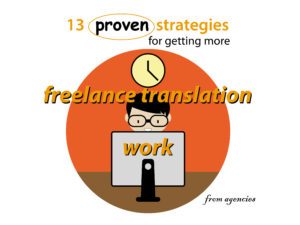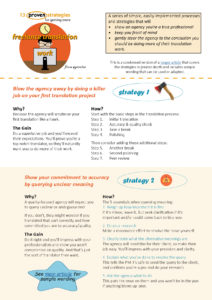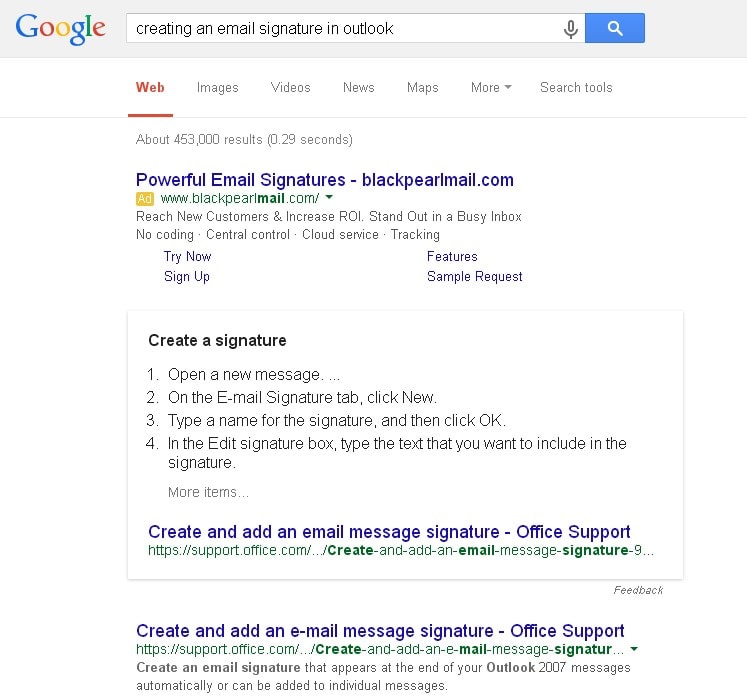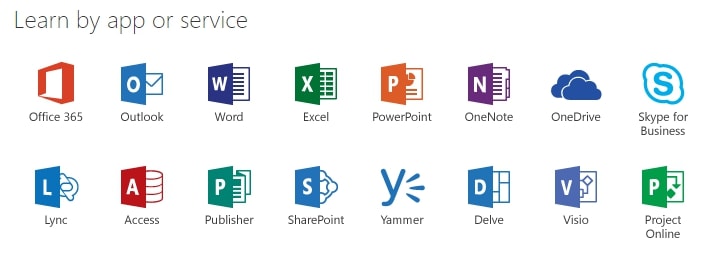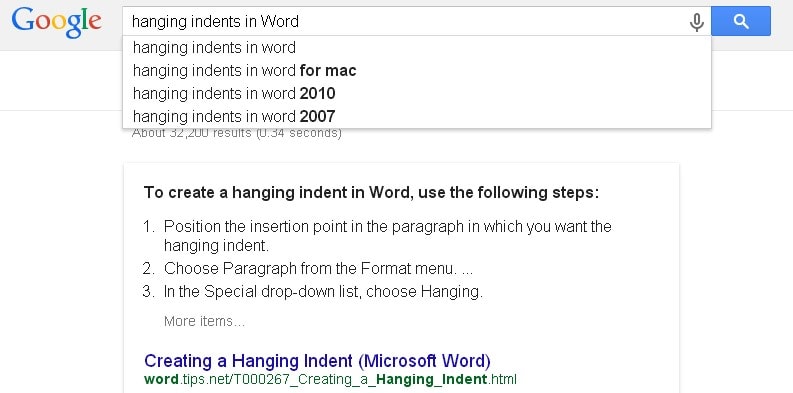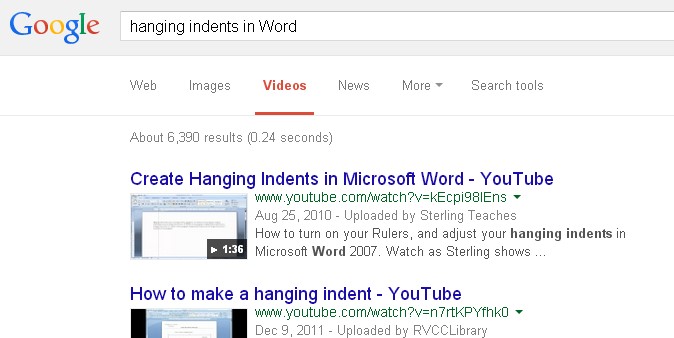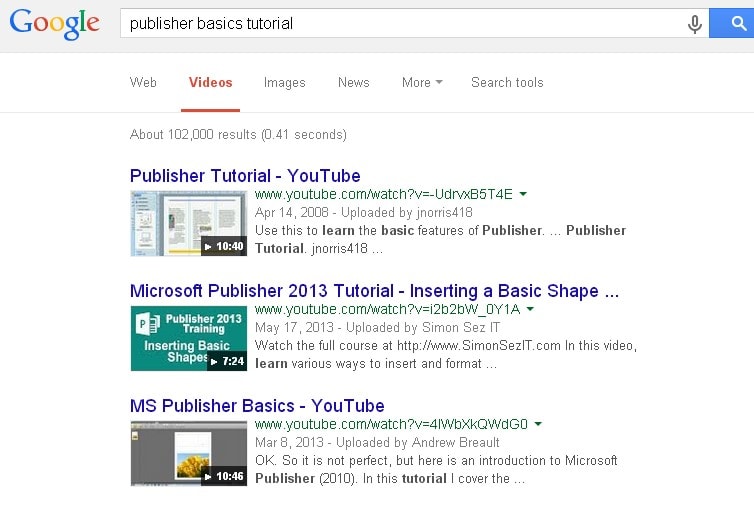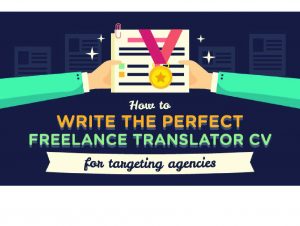I love the 80/20 rule. I reckon it applies to just about everything.
When it comes to agencies, you can bet 20% of the freelancers they regularly work with will be doing 80% of their translation jobs.
With the majority offered only occasional projects.
Want a free leg up to get into that 20% who get the lion’s share of the work?
If so, then this article is for you.
Read on for 13 unique, simple, super-practical strategies you can implement today to get more freelance translation jobs from the agencies you want to work with.
The ones that focus on quality, value your professional skills, and pay decent rates.
And here’s the best bit …
We not only explain why these strategies work and tell you how to go about each one, but you also get sample wording you can use or adapt.
We hope you find them useful.
Note: These aren’t tips on how to become a better translator.
Or any sort of clever marketing sophistry.
Rather, they’re simple, practical processes and strategies you can easily implement that will demonstrate to the agency you’re a true professional and will get and keep you front of mind.
They’re approaches that gently steer the agency to the conclusion they absolutely must have you doing more of their translation work.

- Deliver a superb translation on your first job for an agency – it’ll blow them away
- Query unclear text you’re asked to translate – it’ll show you’re committed to accuracy
- Write faultless e-mails – it’s what you’d expect of a professional translator
- Become a formatting expert – and the agencies will love you
- Develop a personal relationship with your translation project managers
- Thank your PMs for their translation work – it’ll make their day
- Ask for feedback on your translations – and win over your project manager
- Enhance your reputation by turning down (certain) translation jobs
- Convert your unavailability for translation work into a smart marketing play
- Nip potential issues in the bud by explaining how you’ve handled translation difficulties
- Create a positive impression by asking if the deadline can be extended
- Point out errors in the text you’re translating – it’ll earn you brownie points
- Turn your translation mistakes into positives
Prefer a shorter version?
This article is over 12,000 words long, but we have a succinct summary with the key essentials of each strategy.

1. Deliver a superb translation on your first job for an agency – it’ll blow them away
You know the agency will check out your first freelance translation job for them real closely, right?
So if you want to get ongoing work from them, make sure you do a terrific job.
Consider spending more time on it than you would for other similar projects.
Produce a superlative translation and stun the agency with your quality.
Why that superior translation should directly gain you more work
The agency will be assessing how good a translator you are, and thus whether to offer you further translation jobs going forward.
Think what goes through a Project Manager’s mind when using a translator for the first time:
“I hope this new translator works out well”.
“I hope she does a good job”.
And when you produce an absolute blinder, what’s the reaction?
“This is great! The reviewer said it’s excellent”.
“Looks like we’ve found a great new translator”.
“I’ll send her more work!”
By producing a superb translation you’ll exceed the agency’s expectations.
And having shown you’re a top notch translator, of course they’ll want you to be doing more of their work.
How to produce the highest translation quality in that first freelance project
Start with the basic steps in the translation process:
Step 1. Initial translation
Work through the document in bite sized chunks of 5 – 10 words a time.
Step 2. Accuracy & quality check
Systematically compare each chunk of source text with the corresponding target text to ensure no meaning has been missed or mistranslated. At the same time identify any inelegant or unnatural wording and bring it up to scratch.
Step 3. A break
To clear your mind and remove any lingering focus on the source language.
Step 4. Polishing
This is where good becomes great. Read the translation through without reference to the source text looking solely at how well it reads. Improve and refine wording until it reads beautifully.
All standard stuff.
Now consider adding these additional steps:
Step 5. Another break
Step 6. Second polishing
So it’s even more beautiful. Coming back afresh might generate some additional improvements. At the very least it will confirm you’ve produced a superb translation – give yourself a pat on the back.
Step 7. Peer review
Consider asking a colleague to review your translation. Especially if you’re relatively inexperienced. A second pair of eyes can pick up little things we can miss, and improvements we can make.

2. Query unclear text you’re asked to translate – it’ll show you’re committed to accuracy
Many freelance translators are reluctant to query unclear or ambiguous text in the jobs they’re working on.
That’s understandable, particularly if they’ve queried things before and had an unsatisfactory or unhelpful response.
But if you’re working with a quality-focused agency, I strongly recommend you do it. In fact, the agency will expect you to do it.
That’s because the last thing a quality-focused agency would want a translator to do is to opt for one potential meaning of ambiguous text, and get it wrong.
Conversely …
if you don’t query something and the agency becomes aware of the issue, they might wonder:
- if you translated that part correctly
- how committed you are to accuracy/high quality.
You don’t want doubts like that in your PM’s mind.
Of course …
you need to be careful how you go about it and make sure you do it the right way.
Do it inappropriately and you might be seen as pedantic, or create confusion. And you certainly don’t want that!
The right way to query unclear meaning in a translation project – your 5-point checklist
1. Weigh up how important it is first
If it’s very minor and not that relevant to the key messages in the document, you run the risk of looking pedantic. Or worse, annoying the PM.
I wouldn’t be querying these issues. I’d choose the most likely meaning, or find a way to work round it.
But if it’s important, yes definitely query it.
It’s about risk management really. There’s very little risk to you or the agency in the first case, much more in the second.
If anything could come back to bite you, it’s best to seek clarification.
2. Make sure you do your research
It’s obvious, but make a concerted effort to resolve the issue yourself before querying it.
That might involve an Internet search, reviewing related information, seeking the opinion of colleagues.
You definitely don’t want to send through a query that the agency immediately solves with a quick Internet search. That would give the agency the impression you don’t research things much. And if a translator doesn’t research adequately, how good are their translations likely to be?
No one would expect you to spend hours on it, but you must make a decent effort.
3. Clearly state what the alternative meanings are
This is important. More than that, it’s super important.
Let me give you an example:
I remember we once sent a query through to a client asking what a particular phrase meant. His reply was “it means what it says”.
He must have thought we were idiots!
The phrase was definitely ambiguous, and it was quite right of us to query it. We just didn’t ask the right question.
So, what that means is …
The client has to have the issue very clearly spelled out.
That’s because clients often won’t get what the issue is. They often don’t appreciate the intricacies of language, and many wouldn’t recognise an ambiguity if they fell over one. The meaning will often seem perfectly clear to them.
The agency has to clearly explain what the alternative interpretations are, and ask which one is correct or intended. It has to be an either or question. Open ended questions frequently won’t produce the answer that’s needed.
So you should do exactly this for your PM – spell out precisely what the alternative interpretations are.
Do this and you’ll impress the PM with your precision and ability to state the issue clearly. And you’ll have made his/her job easier – and those are the things PMs remember.
Don’t do it though and you risk creating confusion, and that won’t help your reputation as someone who is onto it and easy to deal with.
4. Explain what you’ve done to resolve the query
It’s important your PM knows what research you’ve done.
This tells him/her it’s safe to send through the query to the client without anyone else having to spend time researching it.
It also confirms you’re a pro. You care about accuracy and do your research.
5. Ask the agency what to do
Don’t assume your PM will necessarily forward the query to the client.
Some clients are not the easiest to deal with, and can get antagonistic. Some just don’t want to know – the “Don’t hassle me. Just do your job!” attitude.
The agency might make the decision themselves. They’ll gather the opinion of those they can, and make a call.
I’d recommend asking the agency for direction, rather than asking them to get clarification from the client.
You don’t want an unhelpful or inadequate client answer simply shovelled on to you – you’ll be no better off.
By asking the agency to tell you what to do, you’re shifting the onus to them.
If anything later blows up with the translation of this section, you won’t be in the gun. And that’s good risk management on your part.
Sample wording for querying unclear text:
“Hi XXX.
The translation I’m working on has the following phrase, which I think can be interpreted in two different ways:
“[source text phrase]”
This could mean “YYYY” or “ZZZZ”, and I’m unsure which meaning is intended in the context.
This seems relatively important in the document and I’d like to be sure I translate it the correct way. I’ve done quite a bit of research and also asked other native speakers, but haven’t been able to resolve it.
Can you look into it and advise me as to which meaning to use?”
How querying unclear meaning can encourage agencies to assign you more work
By querying unclear or ambiguous text you’re demonstrating you don’t want to risk getting something wrong in your translation.
This sends a clear message that you care about translation accuracy and don’t compromise on quality.
As this is also what the agency is concerned about, they should welcome your intervention.
They’ll see you as being responsible, conscientious, professional – and that’s just the sort of translator they’ll want to be doing more of their translation jobs.

3. Write faultless e-mails – it’s what you’d expect of a professional translator
It’s easy to forget sometimes, but every time you send an e-mail to a translation agency, whether or not it’s part of a job you’re working on, you’re presenting an image of yourself.
You create an impression that either enhances the agency’s overall image of you as a professional translator, or detracts from it.
In that sense every contact you have with the agency (or any client for that matter) is marketing.
If you want the agency to be a decent source of income for you, it pays to take a little extra effort to make sure the image you’re presenting is favourable.
Why taking a bit of extra care with your e-mails might just net you more translation jobs
Agency project managers definitely take note of the quality of your e-mails. More than that, they judge you by them.
A lot of freelancer translators will dash something off to a PM during a project that isn’t very clearly worded and/or is poorly formatted.
That runs the risk of the PM concluding that if they can’t be bothered getting a simple e-mail right, they’re probably not going to take that much care over their translations either. Not good!
Conversely, by always sending professional quality e-mails you’ll enhance, or at least maintain, the agency’s opinion of you. And you’ll leapfrog those that don’t in the pecking order.
Agencies don’t want to be dealing with translators they’re unsure about.
They much prefer freelancers who demonstrate their professionalism in everything they do, and will favour them for their translation assignments.
3 super-easy tips for always impressing with your e-mails
1. Check and double check for typos and errors
How often have you been sure you’ve sent a perfect e-mail, only to discover a glaring mistake later on?
It happens. But it doesn’t help your professional image.
With a bit of discipline and a minimal amount of extra time spent in having another look, you can cut right down on these basic mistakes.
This is so obvious, yet something many translators, possibly even most, don’t do. We’re all in too much of a hurry these days it seems.
But because your e-mail is also marketing your professional services, it pays not to rush.
After all, a spelling or grammar mistake or incorrect autocorrect gives the impression you don’t check your work very thoroughly.
And that’s not a good piece of marketing for a professional translator…
Check and double check, and if you’re as hopeless as me at seeing mistakes on a screen, even triple check, your wording for errors before sending.
2. Ask yourself how your e-mail could potentially be interpreted.
Every now and again one of our PMs will comment about having received a stroppy e-mail from a translator.
I can assure you they don’t like it.
And you can bet they’ll think twice about using that freelancer for their next translation job.
But here’s the thing …
I wouldn’t be at all surprised if often the translator didn’t mean to be stroppy at all. After all, it would be a rather self-defeating thing to do.
It’s quite feasible it was interpreted, but not intended, that way. Individual words, and overall tone, can be open to interpretation.
Clearly you want to avoid things you write being taken the wrong way.
Before you hit the Send button I’d suggest putting yourself in your recipient’s shoes and imagining how your e-mail is likely to, or could possibly, be perceived.
Take a glass half empty approach and imagine possible negative reactions.
This will generally help identify wording that could be toned down a bit and made a bit softer and more friendly.
Don’t assume your message will necessarily be interpreted as you intend. Check your tone carefully before sending.
3. Use a quality e-mail signature
So many translators miss out on this super-effective and oh-so-easy-to-implement marketing winner.
A smart and appealing signature marks you as someone who has taken the trouble to present a professional image.
And if you care about that, the inference is you’re likely to also care about the quality of your translations.
On the other hand …
A bare-boned “John Smith” signature, or worse still none at all, conveys the impression a professional image isn’t that important to you.
And that may well make the agency wonder if you’ll therefore care about professional standards in your freelance translation work.
How to create a signature befitting a professional translator
E-mail programs all have different ways of creating and using signatures, but it’s generally a pretty simple thing to do. Google how if you’re unsure:
I’d recommend just a few lines to the signature. A clean simple look is best.
This is the information I suggest you include:
- Your name
- Qualifications
- The words “Professional Translator” or similar with your language pairs/directions
- Contact details – phone and e-mail particularly (only?)
- A logo if you have one
- A link to your website – if it’s a professional one
Keep your signature short, clean and clear. Make sure it enhances your image as a professional translator.

4. Become a formatting expert – and the agencies will love you
Many translators are brilliant at formatting. Every translation file they produce looks stunning.
Others aren’t quite so good.
Their files can sometimes look a bit untidy – perhaps with things out of alignment, different fonts or sizes, or inconsistent layout. The agency will need to tidy these things up.
Which group are you in?
And what are you like at handling different file types?
There’s TM software of course but the need for that will vary hugely between agencies and across languages.
Most translators will be proficient in Excel and PowerPoint, and being able to produce elegantly laid out files in these programs is an advantage. If not bordering on essential.
But there are also translation jobs in Publisher and other more sophisticated design programs like Illustrator and InDesign. Few translators can handle projects working directly in these programs.
Why being a great formatter will encourage an agency to give you more translation jobs
No agency will want to have to tidy up a translator’s file if they can help it.
It’s pretty obvious project managers will prefer to assign jobs to translators who they know will deliver well formatted and presented work.
Equally, if they have a project in a design program, their preferred option will be to assign that to a translator with the skills to work directly in the program and provide a finalised target language file.
That’s way easier and faster than having to extract the text into say Word, have that translated, and then typeset the translated text back into the design file.
So the bottom line is if you can produce well-presented translations across a range of different file types you’ll be highly valued by an agency, so more likely to get more work from them.
Two ways to enhance your prospects of getting more jobs from the agency
1. If you’re not already a layout and formatting master, upskill
This often won’t involve a lot of effort, and should be time particularly well spent.
Here are five simple ways to upskill without leaving your chair:
Virtually all programs have a how to manual, generally on-line. Access it off the program’s main Help menu item and search for what you want or need to know.
This is a great resource with short videos on specific techniques and tips for working in the latest Office suite of programs.
These videos for Word might be useful, with links to other versions further down the page.
If you want to know something, you can bet others have wanted to know it too. Which means there’ll be information on it somewhere.
A search will often give you an immediate answer:
And don’t forget to look for videos:
Searches can also bring up great forum answers and threads.
These can often provide a clearer explanation than the program’s Help file.
And they’ll often give alternative ways of doing things and useful related techniques.
Search for phrases like “basics”, “beginners”, “introductory”, “introduction to”, “for dummies”, etc:
These will have a subscription, but often have free introductory or basic level tutorials. We use Lynda.com, but there are many others.
Search for your program name + “online training course”, or similar.
If you’ve learned a whole new program, or upskilled to rectify shortcomings that may previously have made an agency reluctant to send you certain jobs, make sure you let them know.
- Using single (not multiple) tabs
- Almost everything involving tables
- Inserting comments and using Track changes
- Setting and adjusting columns
- Using column, section and page breaks
- Indents and paragraph spacing
- Hanging indents
- Bullets and numbering
- Adjusting page and margin settings
- Applying superscript and subscript
- Page numbering
- Inserting footnotes
- Using headers and footers
- Applying and editing styles
2. Proactively tidy up files, and tell the agency you’ve done it
We all know client files sent through for translation can sometimes be messy.
Of course you could choose to simply replace the text and deliver an equally, or perhaps slightly less, poorly laid out target language file.
However this is risky …
In an agency many different people can look at different files, so they might assume this layout is actually your work and conclude you aren’t good at formatting.
And of course someone in the agency will likely have to spend time tidying up “your” file before sending it off to the client.
Alternatively …
you can quickly tidy things up and potentially earn some brownie points with your PM.
Again, make sure you tell your PM what you’ve done – you won’t get any kudos if they don’t know!
Here’s some suggested wording to use:
“By the way, the tabs were inconsistent throughout the document so I’ve tidied them up.”
“The tables were a bit messy formatting wise, so I’ve made them all consistent.”
“There were different fonts and text sizes in the document, so I made the layout more uniform. Hope this is OK!”

5. Develop a personal relationship with your translation project managers
Now I don’t mean becoming best buddies and going out partying together.
Quite the opposite, it’s important your dealings with PMs on their translation jobs are kept at a professional level.
I mean making the effort to relate to your PMs on a personal level within that professional framework.
Do this and they’ll start to build up a picture of who you are and get a sense of you as a person. They’ll feel they know you a little.
And that can bring you big rewards …
Why this strategy can be so effective in netting you future jobs
Agency project managers are constantly choosing between potential translators for their jobs.
And they’re much more likely to opt for someone they feel they know a little and have positive connotations for than another translator they don’t know much about and for whom they have minimal or neutral associations.
Why?
Because we all prefer to deal with people we know and like.
So this strategy is essentially about making sure you’re more than just a name on a list for your PM. It’s wrapping a personality around your name.
And here’s the icing on the cake:
Hardly any freelancers ever do this, so you’ll automatically set yourself apart. And I believe increase your chances of those project managers wanting to send more work your way.
5 dead-easy ways to build a relationship with your PM
1. Thank your PM
See our next tip – number 6.
Being courteous and appreciative creates a feel good association for the PM.
And that’s always a positive.
2. Share something from your life occasionally
Nothing momentous. Just something brief, positive and friendly, mentioned as an aside.
“I’m going away skiing for the weekend to XX, but I’ll monitor my e-mails just in case you have any queries.”
“Wow this has been a rush, and now it’s finished I’m going to take Lingo (my dog) for a walk and have a nice strong espresso – I need it!”
“Thanks for the job XX. I’m just about to take my daughter to her violin lessons, so I’ll look at it when I get back home.”
“I see the weather forecast is good for the weekend, so I hope you can get out and enjoy it. I’m looking forward to going to the beach for a swim.”
What’s the gain here?
Well, first of all it shows that you view the PM as more than just a name and e-mail address.
You’re acknowledging there’s a person behind there and taking the trouble to relate to them. That’s bound to be appreciated.
And secondly you’re building up a picture of yourself. The sorts of little titbits people might remember – you ski, have a daughter who’s learning the violin, have a dog called Lingo, etc.
And even if the detail won’t be remembered, by being friendly and personable you’re helping build those positive associations.
Tip: You may want to consider your PM’s personality type here.
For a flamboyant, outgoing person, your comments can be more personal, informal and expressive.
However for someone who is more reserved and likes to keep things at arm’s length, keep your comments short, generic and pretty superficial.
You should be able to get a feel for this from the tone and wording of the e-mails the PM sends you.
3. Phone your PM once in a while
Picking up the phone occasionally instead of e-mailing your PM is a great strategy, in large part because hardly anybody else does it these days.
A particularly effective time to do it is when you’ve just received an e-mail query:
“Hi XX, this is YY. I thought it’d be quicker to phone you …”
First off, your super quick response will be appreciated.
Plus you’ll have the surprise factor working for you.
And thirdly, talking directly with your PM is a much more personal response than sending an e-mail.
This all means it’s highly likely to elicit a positive emotional response from your PM. And this is precisely what you want to achieve.
It’s how those feel-good associations you want to create are built up.
Of course it’s quite possible you won’t actually get through to the PM and will get a machine instead. No worries, leaving a friendly message is almost as good.
You still have the novelty factor going for you, and you’ve still talked, albeit indirectly, to your PM. Which is more personal than an e-mail.
If nothing else you’ve given your PM a voice to associate with your name.
4. Go to a conference or talk if your PM will be there and introduce yourself
If the PM is a translator he/she may well be a member of the local translators’ association and go to meetings and/or conferences.
And that’s a perfect opportunity to meet your PM and get to know him/her a little.
Having a conversation in person is the most powerful thing you can do to build up those positive associations.
It’s providing a direct window into your personality. This engages all the senses so is much more likely to create a lasting impression.
All you have to do is be pleasant and agreeable – nothing hard there!
5. Pass on your regards to the PM when you meet someone else who works for the company
This is another simple way to create a positive impression.
The PM won’t expect it so it should come as a pleasant surprise. And that’s the sort of thing that is likely to stick in the mind.
Of course the trick is to actually get the person to pass the message on.
For that to happen your request must be seen to be genuine, it can’t be formulaic. And it has to be something the person will think the PM will want to hear.
I’d recommend compliments – stressing your appreciation of the working relationship, or work you receive. A bit of praise can go a long way.
Perhaps:
“Please say Hi to XX for me. And please tell him I really enjoy working with him – he always explains everything so clearly that working with him is real easy.”
“Please pass on my regards to XX. I love the translation work I get from her – really interesting topics. Please tell her I always enjoy translating her texts.”
“Please say hello to XX for me. She’s one of the best PMs I’ve ever dealt with. Very professional and it’s a pleasure working with her”.
What PM isn’t going to want to assign more freelance translation jobs to someone who says they love working with them?

6. Thank your PMs for their translation work – it’ll make their day
Fortunately, not all translation company project managers are like Pam, the evil PM. Most are perfectly normal, even nice, human beings. And we all like being thanked, don’t we?
If your PM is especially busy or feeling harried, it just could make their day, or at least part of it.
I’m not suggesting sending those stock-standard, bare-boned “Thanks” e-mails that really just mean “I got your e-mail”.
They’re not going to make much impact
I mean saying thank you in a way that your PM will think you mean it and will feel appreciated.
For that you need to personalise it.
Perhaps something along these lines:
Sure fire wording any translation project manager will love to receive
“Thanks for thinking of me for this translation, XXX. Much appreciated!”
“It’s a pleasure dealing with you, XXX. Thanks!”
“Thanks so much for the prompt reply, XXX. I really appreciate it.”
“I really enjoyed this job XXX, it was a very interesting text. Thanks for sending it to me.”
“I always enjoy the jobs you send me, XXX. Thanks again.”
“Job gratefully accepted, XXX. Thanks so much – your work is much appreciated as always.”
The surprising way further translation work can flow from simply saying thank you
Now you’re probably thinking something so trivial couldn’t possibly lead to more work.
Don’t be too sure …
Remember, PMs have to actively select a translator for every project they’re working on. Often they’ll end up looking at a list on their screen of several potential translators to choose from.
Now most PM – freelance translator dealings are unremarkable. The projects go well, there are no problems, all smooth sailing.
Which means nothing particularly sticks in the PM’s mind about that translator. Their name doesn’t conjure up any particular impression, only that there haven’t been any problems with them.
So consider this …
What if there’s one name on the list that the PM immediately recognises as being an appreciative and pleasant person to deal with? Who do you think is most likely to be offered the job?
It’s human nature to want to deal with people you feel good about. Be that person and it could just make the difference, and get you a greater share of the PMs translation work.
The effort involved in doing this is minimal, so there’s nothing lost in trying it. Besides it could just give you as well as the PM a lift.

7. Ask for feedback on your translations – and win over your project manager
Question: How many freelancers do you think ask for feedback on their translations?
Answer: Virtually none, probably well under 1%.
Which is partly why we strongly recommend doing it, and why there’s so much to gain from this simple technique.
The potential gain from seeking feedback on your completed translation jobs
First up, you’ll stand out from the crowd.
And that’s the point of the exercise. The objective isn’t so much to actually receive feedback – that’s very much secondary. In fact you’ll probably only rarely get any.
The real value comes from the indirect message you’ll be sending to your PM.
A message that broadcasts loud and clear that you’re a translator who:
- cares about quality
- is open to suggestions
- is a reasonable person
- is easy to deal with
PMs love getting this sort of message. It’s music to their ears!
PMs are constantly assessing and reassessing how professional their translators are. They’re constantly trying to figure out if they’ll do a good job, and if they’ll be easy to deal with.
They want to know this about you.
And you’re giving them that information on a platter.
Perfect! Just what they want.
In short, translators who show they care about quality and are open to feedback are highly valued by agencies, and are therefore likely to get way more jobs than their colleagues who don’t demonstrate those qualities.
The right way to ask for feedback on your translations
Send a personalized e-mail, tailored to your Project Manager.
Don’t do it by phone, that won’t make much impact. And it’ll quickly be forgotten.
E-mails get kept, and can be seen again – a (semi) permanent record demonstrating you’re the ideal freelance translator for the company to be sending jobs to.
But …
avoid using a template you trot out every time you deliver a translation. That will soon be seen as hollow and lacking sincerity.
The trick is for your PM to see this as you having gone to the trouble to stress you’re open to feedback on this particular job.
Important: Keep your e-mail short and sweet. The PM will be busy and won’t have much time.
It needs to be able to be read in 5 – 10 seconds.
The 5 key ingredients to the ideal translation feedback request
1. Address your PM personally
“Hi Jane” or “Dear John”.
Friendly but professional is the aim, and most people will take “Hi” positively.
If that seems too casual to you, or your dealings with the company suggest a more formal approach, go with “Dear”.
2. Say you appreciated getting the job
Everyone likes being thanked, and PM’s are no different.
And if you convey that you enjoyed the job, even better.
PMs don’t get told this very often. And they much prefer allocating work to translators who make it known they appreciate and enjoy the projects they receive.
3. Mention a specific aspect of the project
This is important.
This is what differentiates your e-mail from all those standardised, generic, template-like e-mails that don’t actually mean anything. And that PMs will generally ignore.
Referring to this particular job will grab the PMs attention. It’s what will make him/her realise what you’re communicating is relevant and possibly important, not a formulaic courtesy. It personalizes your e-mail and is the key to getting it taken seriously.
4. Include a sly reference that demonstrates your professionalism
This is where the rubber hits the road, where you really get the benefit.
Say something that the PM will see as confirming you’re a top flight translator and did a high quality job.
For example, convey that you did the necessary research, have experience in this field, reviewed your translation, collaborated with a colleague, etc.
Remember, PMs are always on the lookout for these indicators.
So give them what they want!
5. Say why you’d like feedback
Don’t just ask for feedback. That would be missing a trick.
Link your request to your professional development as a translator.
Convey that you see feedback as a great way to learn and improve, and you’ll be sending a very powerful and positive message to your PM. It’s not one that’s received very often, and he/she will be suitably impressed.
Another indicator you’re the ideal translator for the company to be working with.
Possible wording for your feedback request
Here are 3 sample e-mails we think would do the trick:
Hi XXX.
Please find attached my translation as requested.
Thanks for sending me this project, I really enjoyed it. And thanks particularly for the comfortable turnaround time. It’s always great to have the time to do the research and a thorough review.
If you have any feedback on my translation I’d welcome it. I’m always interested in seeing other views and ways of doing things.
Best regards,
Hi XXX
I just wanted to say I’d be happy to receive any feedback on my translation of the XXX I sent through on XXX. I like seeing others’ comments and edits as it’s a good way to learn.
By the way, I enjoyed researching the terminology for this translation – I always find [topic] an interesting field.
Thanks for sending me the job – I really appreciate it.
Kind regards,
Hi XXX.
I’m attaching my translation for project XXX.
I always enjoy the translation work you give me, XXX and this job was no different. [topic] is a fascinating subject and I loved reading up about it and getting my wording just right.
I’d welcome any feedback your reviewer or client might have – I like to see other viewpoints and wording, and it’s a great way to continue improving.
Thanks again for the job.
Best regards,
When to send your request
Option 1. When you deliver your translation
The advantage of this timing: it can simply be part of your translation delivery process. There’s no extra step needed.
Possible disadvantage: your PM may not actually read it, especially if he/she is rushed.
If you’re attaching your translation, your PM might go straight to that and assume your e-mail is just the standard “Here’s my translation” thing and not take in what you actually say.
If you find you’re not getting any acknowledgement of your requests for feedback, try the second option.
Option 2. A few days later
Advantage: it’s not associated with delivery of your translation, so the PM should give it their full attention. There’s less risk of your message being overlooked or glossed over.
Disadvantage: It means a separate process for you, and you have to remember to do it.
Either timing will work just fine. Select whichever one suits you best.
Wrap up
Remember, the point of this exercise isn’t necessarily to get feedback on your completed translation.
Instead it’s primarily designed to:
– impress your PM that you are open to feedback and see it as a way to improve, and
– demonstrate you’ve done a top notch job.
And this is what will set you up for getting more jobs from the agency.

8. Enhance your reputation by turning down (certain) translation jobs
Yep, that’s right. You can get more freelance translation work by turning down certain jobs.
This may seem counterintuitive, but here’s the thing …
From an agency’s point of view just about the worst thing a freelancer can ever do is deliver a translation that’s below their normal standard.
- They’ll enter a comment in the translator’s record to say he/she did a poor job. That comment will then be seen by every PM in the company whenever they display that translator’s record. Ouch!
- The translator’s quality rating could be downgraded. Slipping from their A ranking to a B because of one rushed job, means others will now be rated higher. And that means fewer projects offered. It’s that simple.
- That poor translation will stick in the Project Manager’s mind, It’s human nature to vividly remember the bad, and forget the problem-free. One bad job might well negate scores of previous good translations and cloud the PM’s overall impression of the translator.
I’m sure you get the picture. It’s really not a good idea to send in a below par translation to a quality-focused agency.
So …
any time there’s a chance of that happening the smart thing to do is turn down the job.
Here are some circumstances when you probably shouldn’t take the job:
- if you won’t have time for adequate checking and review
- if the subject matter is a technical field you’re not that familiar with
- if it’s marketing blurb and you aren’t that good at that frilly stuff
- if it’s a script (spoken language) and you’re not used to translating text to be read/spoken
OK you say …
but won’t the PM stop giving you jobs if you turn one down?
Nope, not if you do it right.
In fact, if you do it right and you can come out smelling like roses. You’ll actually be more likely to get future work from the PM, not less.
The smart way to turn down a translation job, and reinforce your professionalism
Here’s the trick:
For maximum positive effect you need to:
– explain why you can’t do it
– phrase your “why” so it enhances your professional reputation
Say no to a job without an explanation, and they won’t know if it’s because of the type of text, the deadline, you’re just too busy, or any other factor.
They won’t know if it’s a one-off from you, or you’ll be unavailable on future jobs as well.
They hate being left in the dark like this.
So give them their why.
But don’t waste a golden opportunity!
Make sure your explanation reinforces that you’re a quality-focused translator that wouldn’t dream of doing anything but an excellent job.
Here are some ideas for how to do this:
Possible wording to decline a project if the deadline is too tight
I’m so sorry, XXX but I’ll have to turn this one down. I just wouldn’t be able to complete it and guarantee top quality in that time frame. Sorry!
That deadline is too tight for me XXX, sorry. I’m very conscious of always producing professional quality work and that’s just not enough time for me this time. I wouldn’t want to let you or my own standards down. Sorry!
You’re sending the message that you won’t compromise on quality.
Possible wording to decline a project if you’ve got too much other work
Unfortunately XXX I won’t be able to fit this translation in. Right now I’m committed to other jobs and I can’t let those other clients down. I hate turning down work from you, but this time I’ll have to. Sorry!
Thanks so much for offering me this translation, XXX, but unfortunately I’ll have to say no. I’ve just got too many other jobs I have to finish. I’ve tried to see if I can juggle things to do this one, but no go. Sorry!
This will reinforce in the PM’s mind that you’re in demand and getting plenty of work from other sources.
So other people must think you’re a first-rate translator too.
Possible wording to decline a project if it’s not your technical field
I won’t be able to accept this job, XXX, sorry. It’s a technical field I’m not familiar with, and I make a rule of sticking to the fields I know and where I can guarantee a high standard of translation. I hope this doesn’t inconvenience you.
I’m not the translator you need for this one XXX, sorry. It’s a [name of field] text which isn’t my area of expertise. Sorry to have to say no.
Again you’re underpinning your commitment to high standards.
Summary: Why turning down one job might just get you many more in future
This strategy works because the last thing any project manager in a quality-focused agency wants is a poor translation.
By confirming your commitment to quality, the agency will infer that you have integrity and can be trusted.
Now that’s just the sort of translator the agency is after, so it increases the likelihood of them wanting to use you on future projects.

9. Convert your unavailability for translation work into a smart marketing play
We all know you should tell your regular agencies when you’re going on holiday or will be otherwise unavailable for translation work.
But simply telling them you’ll be away misses an opportunity.
Why not turn it into something that will work to your advantage.
We suggest looking at it as a marketing opportunity. Make the most of that opportunity, and you’ll increase your chances of getting more translation work in the future.
Here’s how we suggest you do that.
The 2 key strategies for turning a temporary absence to your advantage
1. Also contact agencies you only translate for infrequently, and any others you’d like to work with
If you’re on the radar with an agency but clearly not their first choice, or even not really on their radar at all, here’s an opportunity to put your name in front of them again.
Use your unavailability as an excuse to contact them again.
Hopefully it will spur the PM to have another look at you, and with a bit of luck send more work your way.
PMs typically work with the same small group of translators over and over again. Out of habit as much as anything.
Many PMs don’t have the time or are reluctant to try new translators. Even though they know they should.
Giving them your details on a plate makes that easier for them and might just do the trick.
2. Promote yourself and your translation services
Give the agency a reason why they should work with you (more) in the future.
That means selling yourself.
Make it clear you’re not just a run-of-the-mill translator – you’re an experienced, quality-focused expert who will bring benefit to their company.
The 6 essential components to a successful “I’m unavailable for translation jobs” e-mail
1. Tell them (briefly) why you’re unavailable
Particularly if it’s positive, like a holiday to an exotic location. Maybe not if you’re off for a stint in jail, though!
This will personalize your e-mail and perk the reader’s interest.
2. Be specific on your dates
Don’t say something like “I’ll be away for a week”.
The agency will want to know exactly when you’ll be available for translation jobs again, so make sure you give them that.
Rather, “I’m away from XX date and will be available again on YY at ZZ time”.
3. Say you look forward to working with them (again) when you return
Even better, if you’ve worked for the agency before, say you appreciate and enjoy the work they’ve given you thus far.
However you need to say this in a way that the PM will think you mean it.
Don’t use wording that could be perceived as standardized and formulaic and so not genuine.
4. Remind them of your services
Perhaps not needed if the agency already sends you lots of translations, but a must for your irregular or targeted agencies.
Remind them of your language pairs and particular expertise. Don’t be afraid to do this in the body of your e-mail and have it repeated in your footer – that will reinforce the message nicely.
5. Convey your professionalism
This is the key, where you get the real traction.
It’s not uncommon for an agency to try out a new translator who looks wonderful on paper – great qualifications, experience, beautiful CV – only for their translations to disappoint.
So whenever they get an e-mail like this they’ll be looking for evidence you’re not one of those.
So give them that evidence. You’ll be much more likely to get a positive response.
However …
directly stating you’re a great translator isn’t the way to go.
That can be perceived as rather hollow – typical marketing fluff, pretty much what everyone says. And therefore lacking real impact. It may even put them off.
It’s much better if you can convey this message indirectly. By saying something that creates that impression or leads them to that conclusion.
– you have long-standing, respectable private clients. Possible wording:
“I’ve been providing translations to XX, YY and ZZ companies on a regular basis for several years. This has totalled around XXX words to date, and all feedback I have received from them has been very positive.”
– you’ve been working for a small number of quality-focused translation agencies for some time:
“I have been doing regular freelance translation work for 3 agencies for XX years: XX, YY and ZZ. This work averages approximately XX projects and YY words per month.”
– you always review your translations, or have a colleague review them:
“My capacity is XX words per day, maximum. I know some translators do more, but I’m rather fanatical about quality and always thoroughly review my translations before sending them.”
– you have qualifications, work experience and solid translation volume in your specialist field:
“I am a qualified XX and worked for XX years in this field. I now specialise in XX translations, and to date have completed approximately XXX words in this field.”
These messages all convey that you’re a quality-focused translator, and other people obviously rate you highly.
You’re just what the agency wants!
– you’ve been translating for XX years.
Possible reaction: So what? You might have done only modest volume, and who’s to say your quality was any good?
– you’ve done XX million words over the years.
Better, but who’s to say you haven’t been constantly chopping and changing clients/agencies because your work isn’t actually that great.
– you work for heaps of agencies.
Possible reaction: So none of them rate you highly enough to keep you busy?
Just be aware of these possible reactions, and make sure you provide sufficient further info to prevent them.
6. Attach your CV
This won’t be necessary for your regular clients, unless there’s something new to tell them about perhaps.
But important for your infrequent or potential agencies.
It gives them everything at their fingertips and makes it dead simple for them to review your details and start sending work your way more frequently.
Sample wording for your “translator unavailable” marketing e-mail
Example text for an agency you work with regularly
Hi XXX
Just a note to say I’ll shortly be going on holiday and will be unavailable for a week from Friday XX at 5pm. I’ll be available again on Monday YY from early morning. I look forward to working with you again then.
I’m going to ZZ (a new destination for me) and am really looking forward to the break and recharging my batteries!
I’m sure you know, but just a reminder I do [services]. I work with a colleague and we cross-check each other’s translations, so you have a built in peer review process when you use my services.
Thanks so much for all the translation work you’ve sent me so far this year. I always enjoy your jobs and it’s always a pleasure dealing with you.
Best regards,
Example text for an agency you translate for infrequently
Hi XXX
I’m on your books as a XX to YY freelance translator – I’ve had a few jobs from your company this year.
Just a note to say I’ll be on holiday and unavailable from Friday XX at 5pm to Monday morning YY.
I’ve attached my CV in case you want to review my background. Briefly, I have [qualifications] and have been regularly completing freelance translation jobs for 3 agencies for XX years: XX, YY and ZZ. This averages out to about XX projects and YY words per month.
I’d welcome any more work you might have, as I have a little spare capacity.
I’ve enjoyed the previous translation jobs I’ve done for your company, and appreciate the professional way you deal with freelancers.
I look forward to working with you again when I get back.
Best regards,
Example text for a potential new agency
Hi XXX
I’ll be in your database as a XX to YY freelance translator, although I don’t think I’ve had any work from you in recent times.
I thought I’d better let you know I’ll be on holiday and unavailable from Friday XX at 5pm to Monday morning YY.
I’d love the opportunity to work with you again when I get back, as I currently have some spare capacity.
Briefly, I have a few key private clients who I’ve been regularly working with for XX years. That’s amounted to about XXX words to date, primarily [type of texts], and they have frequently expressed their appreciation of the quality of my translations.
I’ve attached my CV in case you want further details.
Thank you for your time.
Best regards,
Why this approach can more than make up for your temporary unavailability
Firstly, you’re letting the agencies know you’re not available for translation work at the moment. A common courtesy, but not all freelancers do this, so they will appreciate the heads up.
Secondly you’re reminding people of your services in a natural, non-pushy way.
Thirdly, and most importantly, you’re subtly communicating you have exactly the qualities the agencies are looking for and value in a freelance translator.
By taking this marketing approach you’re giving yourself every chance of:
- Getting some new agency clients
- Getting more work from your infrequent agencies
- Cementing yourself as a top translator with the agencies you frequently work with
This has to be good for your business as a professional freelance translator!

10. Nip potential issues in the bud by explaining how you’ve handled translation difficulties
Part of your skill as a professional translator is handling those tricky translation issues that can arise on all translation jobs. You know, those terms or phrases where there just isn’t a single perfect or ideal translation.
Here’s what generally happens in these cases:
You research, weigh up the options, decide on your strategy. You’re happy your solution is a good, possibly the best, translation in the circumstances, so you send off your translation to the agency, content in the knowledge you’ve been thorough and professional and the job is well done.
Well, I’d recommend you also flag the issue to your PM.
That’s because others could have a different view and prefer a different strategy and translation. So someone could query, or worse, criticise your decision and translation.
It’s sound risk management for your business to forewarn your PM that others might see things differently.
But more than that, this strategy could also get you big kudos with the agency.
The kudos this strategy can get you, and how that can convert into more translation work
The agency should welcome you alerting them to the issue because:
- they hate nasty surprises and will appreciate advance warning of something their client or a third party might question or potentially declare as “wrong” (we all know clients can do this!).
- you’re providing them with a way to preempt any potential issue with their client by explaining the issue to them, and so cover their own butts. Ie, to practice good risk management.
- they now have an opportunity to impress their client with their professionalism and thoroughness.
The agency will see you as having good business awareness, an ability to see things from their perspective and a cooperative approach.
That’s the ideal translator in their eyes as they’ll believe you’ll instinctively help look after their interests.
Given this is an impression they’ll receive from very few other freelancers, the kudos gained can only help get you more translation work from that agency.
How to flag a translation difficulty on a job to the agency – the 3 key essentials
1. Explain the issue and possible ways of handling it fully and clearly
Not always so easy, I know. Trying to explain an issue in one language in another language can be inherently difficult.
But do your best to explain it so someone unfamiliar with the language(s) will be able to get the gist of the difficulty.
The agency may have to forward your explanation on to the end client.
2. Say why you chose the option you did
Showing a logical and considered thought process demonstrates how thorough you’ve been and how soundly based your choice was.
This can’t help but impress the PM and underscore how professional you are.
And if someone is going to insist on different wording, their reasons would need to be equally soundly based.
3. Say you’re open to other alternatives
This covers you if someone reviewing your translation is adamant an alternative strategy or wording is better.
And PMs know that translators who are open to suggestions are typically very easy to deal with and help make their projects run smoothly.
So again it’s sending a subtle message the PM will be very receptive to.
You need to tread carefully with this strategy.
I’d only recommend it for issues a reasonable reviewer might think important enough to change or query. That probably restricts it to key terms and concepts, and less important terms that occur multiple times so there is a cumulative effect.
Anything of minor importance probably doesn’t warrant it.
This strategy is partly about risk management – pre-empting any potential criticism of your translation. If the issue is relatively minor in the scale of things, the risk is relatively low.
There may also be cases where you consider the issue important enough, but it’s extremely difficult to explain it clearly enough for someone unfamiliar with the language to understand.
This is tricky. It’s really important you don’t create confusion. And you certainly don’t want e-mails going endlessly back and forth trying to clarify it further.
So in this case I’d be inclined to leave it. After all, it may never be queried anyway, and you did a thorough and professional job, which can always be demonstrated later if need be.
An example e-mail
Hi XXX.
I just wanted to alert you to something in the translation I’ve just completed.
The source text includes the term “XXX”, for which there isn’t a single, direct, succinct equivalence in [language]. The term basically means/refers to YYY.
I’ve translated this as ZZZ throughout the document. I’d considered AAA and BBB, but concluded ZZZ was probably best because CCC.
As there are alternative ways of translating it, some people might prefer a different option to what I’ve chosen. I’m open to suggestions on this, of course.
I thought I’d better let you know about it, in case it’s queried later.
Best regards,

11. Create a positive impression by asking if the translation deadline can be extended
Here’s the thing about deadlines deadlines on translation projects –
they’re hardly ever genuine.
Another few hours or a day or two generally won’t make much difference. The sky won’t fall in.
Clients give their translation agency a deadline because … well often just because that’s what you do.
And the agency will try to build in some leeway and wriggle room with the deadline they give their translators.
So …
if the time frame is too tight and you could otherwise take the job, ask the PM if you can have more time.
Sometimes they’ll be able to say yes straight away. Sometimes they might be able to go back to the client and ask to extend the deadline – but of course you can’t count on this, as agencies are understandably reluctant to do that unless absolutely necessary.
The right way to ask for more time on a translation job
As always, the trick is in how you go about asking.
Make sure you do it in a way that reinforces the message that you won’t compromise standards.
Here are three sets of possible wording you can use:
“XXX is there any chance of a little more time for this translation? It’s a little too tight for me to do a professional job. I could take it if there was a little more leeway – say an extra day?”
“Hi XXX, thanks for offering me this translation. I’d love to accept it but the delivery date isn’t quite long enough for me. I would need another day, is that at all possible? I wouldn’t want to let you down by rushing, and with the extra day I could guarantee a high quality translation.”
“Would it be possible to extend the deadline by a day for this project, XXX? The deadline you’ve given doesn’t quite give me the time I need for the checks and reviews I always do to ensure my translation is 100% accurate and has good quality of expression. I’d really like to accept the job if that was possible.”
How this simple request can improve your future work prospects
Good agencies value translation quality above all else, and what you’re doing here is making a point of emphasizing you’ll always do a professional job.
You’re showing you’d rather turn down a job than run the risk of having to rush, with quality being potentially compromised.
This is just what they agency will want to hear, and the PM will remember this when allocating future projects.
What to do when you get caught out with a deadline during a translation project
No one likes it, but the unexpected and unplanned for can happen. And sometimes you’ll misjudge how difficult the text is, or the research time involved.
Your PM should be able to understand this – after all it happens to us all.
Here’s my take on the 5 key steps you should take to best handle the situation when it becomes apparent during a job you’re likely to miss the deadline.
1. Tell the agency as soon as possible

If not, the more warning they have the better. The more time they or their client have to make adjustments, the better.
Never leave it to the last minute to tell them.
PMs really hate nasty last minute surprises. Do that and you can be sure it will be remembered.
It’s a lot more palatable for the agency to have to go back to the client early, rather than at the last minute. Hey, they’ll probably even thank you for the early heads up.
2. Tell them what’s happened and why you need more time
Honesty is the best policy here. Don’t make excuses, just explain the reasons.
And give specifics:
- If something came up, say what it was.
- If you misjudged the time it would take, say so and why it’s taking longer.
- If you need more time for research, say what it is that you need to delve into and why.
The better the agency understands exactly what the issue is, the more accepting they’ll likely be. And they’ll be able to give their client a better and more plausible explanation.
3. Tell them when you will deliver
I know it can be hard, but it really is important you take a deep breath and commit to a new delivery time.
Put yourself in the agency’s shoes …
As soon as they go back to their client to say the translation will be late, that client is going to ask when it will be delivered. The agency has to be able to give a definite answer.
If you fudge on when you will be able to finally deliver, you’re putting the agency in an awkward position with their client.
And that is bound to agitate your PM, and is the sort of thing that gets remembered. You don’t want your PM thinking you’re not quite as easy to deal with as you could be when things don’t go as planned.
It goes without saying you absolutely must now meet the new deadline. Miss that as well, and the chances are high you’ll have said goodbye to future work from that agency. They’re likely to conclude you’ve become unreliable, so someone it would be risky to send more work to.
4. Don’t take shortcuts
It can be very tempting to cut back on your checks and review process when you’re struggling to meet a deadline, but don’t do it.
Your translation will probably be around long after everyone’s forgotten you were working under pressure.
If someone later finds some less than ideal wording or an inaccuracy in your translation, all they’ll remember is you didn’t do a very good job.
This is no good for you or the agency.
5. Reinforce your commitment to quality
This is the crucial step. It’s the key to retaining, and potentially enhancing, your reputation with the PM and agency.
Again, look at it from the PM’s point of view …
You’ve said you can’t meet the initial deadline, so the big fear now will be that you’re going to rush things and not do a thorough job to get the translation completed asap. Your PM may not say as much, but it’ll be a nagging doubt in the back of the mind.
It’s smart to provide reassurance that that won’t be the case.
I recommend directly addressing that (probably unspoken) concern. Here is some possible wording:
“This will give me time for a full review as per normal”
“Rest assured I won’t take shortcuts, and my translation will be to my normal high standard“
“I won’t skimp on my usual quality checks, so you can have full confidence in my translation”
The thing to remember in all this is that PMs hate uncertainty.
They hate not knowing when you’re going to deliver. And they hate being unsure whether you’ll actually do a good job.
Reassure them on both counts and you’ll not only take the pressure off them, but they’ll see that as a positive and they’ll remember how professionally you handled the situation.
Why this approach should save your bacon and could even work in your favour
How you handle the situation will generally have much more impact for you than the missing of the deadline itself.
Follow these steps and you’ll make the best of an otherwise less than ideal situation.
The agency will appreciate you handled things responsibly and professionally, and above all didn’t rush and end up delivering a substandard job.
They’ll remember that, and if they’re reasonable won’t let one slip count against you on future jobs.
But of course you really wouldn’t want to make a habit of missing deadlines …

12. Point out errors in the text you’re translating – it’ll earn you brownie points
Many translators are reluctant to point out source text errors in the jobs they’re working on.
Perhaps they used to but typically wouldn’t get much of a response, so now don’t bother.
But I recommend you do.
When you consider what you potentially have to gain from doing it, it has to be worth the fairly minor effort involved.
The potential benefits to your translation business of pointing out source text errors
Agencies welcome ways of showing their clients how professional they are, and helping them fix mistakes in their source materials is one way they can do this.
It’s adding value, exceeding the client’s expectations, demonstrating what a useful supplier the agency is.
So by flagging errors to your PM that may not have been noticed, you’re providing the agency with an opportunity to impress their client.
They should welcome that, and it should gain you brownie points.
But more than that, doing this will also reiterate to your PM that:
- you notice things, and
- it’s important to you that things are correct
These are great messages to be sending to an agency. It’s reinforcing that you have good attention to detail and care about professional standards – key requisites for every professional translator.
These are the sorts of indications PMs look out for, and value.
It all adds to their positive impression of you.
On the other hand …
if you notice an error and don’t say anything, and your PM then becomes aware of it, what impression does that give?
They might think you failed to notice it. Or might conclude you must have noticed it but wonder why you didn’t mention it.
Either way it could just put a doubt in the PM’s mind over either how thorough you are or how committed you are to everything being spot on.
Neither of which would help get you more work from the agency.
So in summary, telling the agency about source text errors:
- gives them with a way to bolster their value to their client, and
- demonstrates your commitment to professional standards as a translator.
The agency will get the message of how beneficial you can be to them, which should see them offering you an increased number of their translation jobs going forward.
How to point out source text errors for maximum effect
1. For more significant errors I suggest mentioning/listing them in an e-mail.
Here is some sample wording you can use, or adapt to suit:
“By the way, I noticed this error in the document, that your client might want to know about.”

“In working through the document I noticed an error that might be important for your client.”
“I saw a mistake in the text which might be sending a message your client wouldn’t want, so I thought I had better tell you about it.”
2. For minor errors, you might want to keep track of them, and flag your PM.
Here is the wording we suggest:
“I noticed a few minor errors in the document, typos and punctuation mainly. Just let me know if you would like to know about these. I’ve kept a note of them and can easily send them through if you’d like.”
This way you still get the brownie points and demonstrate your commitment to things being right, without hitting your PM with something he/she may not appreciate.
- Don’t overdo this. Be sure no one is going to interpret your comments as being pedantic. Creating that impression could be highly counterproductive.
- You probably want to weigh up how significant a mistake is. A typo with minimal significance buried in the depths of the text may not be worth mentioning. But a confusing or misleading sentence in a key part of the document certainly is.
- And you may need to take your PM’s personality into account too. If previous dealings lead you to think he/she probably wouldn’t welcome it and would likely view it as an unwanted hassle or inconvenience, you might want to leave it. But most good PMs should be receptive, and appreciative.

13. Turn your translation mistakes into positives
Mistakes happen. We’re human and we all make them.
Nobody is going to translate a few million words across scores of projects over a few years and not get something wrong somewhere.
Good agencies and project managers understand this.
They don’t like mistakes in their translation jobs any more than anyone else, but they accept they’re going to happen occasionally.
So when they do …
the most important thing is how the situation is handled.
Of course you don’t want to make a habit of it, but if you do make a mistake in a translation job, it shouldn’t be the end of the world.
Believe it or not …
it’s actually an opportunity to increase your professional standing with the agency.
For the agency the immediate focus will be to:
- Understand exactly what the issue is
- Fix the situation for their client
Once that’s nailed, they’ll want to prevent it happening again. They’ll want to know if it genuinely was just one of those things, or if it highlights a systems problem somewhere.
For example:
- was this a text that really should have been translated by someone else with different technical expertise?
- did you take shortcuts and not do a thorough quality check as part of your translation process?
- if there was a separate review process, did that fall down somewhere?
- was there too much pressure on to meet a very tight deadline?
- etc.
The agency is probably going to want information from you, and how you respond is the key to how willing they’re going to be to continue working with you in the future.
The best thing you can do is respond in an honest and professional way.
Do this and you could come out with the agency having an even higher regard for you than previously.
This is what we suggest:
How to counteract the negative impact from a translation mistake – your 7 point checklist
1. Respond quickly
Demonstrate to the agency you’re taking this seriously and it’s a priority for you right now.
If you don’t reply promptly they might conclude you’re not particularly worried about something they think is pretty important.
And that might make them query your commitment to professional standards.
2. Explain exactly what the error is
It might be self-evident, but sometimes isn’t.
A clear explanation of the issue from you will not only help the agency better understand the problem, but will impress them with your openness and therefore your professional integrity.
3. Own up
Tell the agency you accept it’s your mistake. They’ll figure that out anyway, and will respect you for acknowledging it.
Conversely …
Ducking for cover or trying to wriggle out of responsibility would convey exactly the wrong message.
If the agency thought you were being evasive they would likely see that as putting a question mark over your integrity and professionalism.
They might conclude “if you won’t accept you made a mistake, how can we trust you in the future?”
That’s not going to help your chances of getting future work from them, and could even see you transferred to their “Do not use” list.
4. Apologise
It sounds basic, but sometimes a translator will say yes it’s their mistake, then not apologise.
The agency might be up for a financial loss, and potentially lose an important client so will appreciate you saying you’re sorry.
Definitely don’t grovel, just say you regret the mistake and the inconvenience caused.
5. Rectify the mistake
If appropriate, fix the immediate issue as soon as possible, and in the best way possible.
6. Identify what went wrong
Tell the agency how it happened, what caused the mistake.
Again, honesty is the best policy here. The clearer picture they have of this the better, and again an open and honest explanation will reinforce both your professionalism and your personal integrity.
7. Say what remedial action you’ll take
If there was a problem with your translation process or not checking thoroughly enough, you’ll want to fix this.
Tell the agency what you’re going to do to avoid the same thing happening again, and reiterate your commitment to high standards.
But …
If there was no systemic problem, ie you followed a thorough, best practice process and simply got something wrong, make sure the agency knows this.
They’re probably going to automatically assume you were sloppy in your processes, so if this genuinely wasn’t the case, it’s important to spell this out to them. You need to debunk that negative assumption.
Why this approach can bring you more, not fewer, translation jobs in future
By adopting the approach outlined here you’re showing your PM and agency that you:
- take mistakes seriously
- appreciate it’s a problem for them
- are honest and have integrity
- will do your best to ensure it doesn’t happen again
- are committed to high translation standards
That’s a pretty good set of messages to be sending!
You’ve demonstrated your commitment to professional values and your personal integrity in testing circumstances.
You’ve also been proactive in helping the agency understand what happened, so they can respond to their client.
The agency will appreciate your cooperation, honesty and that you didn’t dive for cover. By handling things in precisely the way the agency would want, there’s a fair chance you will actually have enhanced their estimation of you.
Far from shun you for future work, you might just find they’ll want you to be involved in more of their translation projects.

Conclusion / Wrap up
From an agency and PM’s perspective, the perfect translator for their jobs is someone:
- whose translations are top notch
- who is pleasant and enjoyable to deal with
- whose projects run smoothly and are hassle-free
Our 13 strategies work on these 3 aspects – they’re mostly a series of subtle indicators that you tick these boxes.
They work because PMs are constantly assessing and re-assessing translators on these criteria, and so are always on the lookout for and receptive to these types of signals.
I believe if you’re systematically sending these sorts of messages to your PMs you can’t help but markedly increase your chances of them sending you more freelance translation work.
We’ve got great tips for your website, cv, setting your rates, quoting and a whole lot more.
Head over to our translator tips and resources page and make your choice.
Or you could start with one of these 3 popular articles:
How to write the perfect translator CV for targeting agencies
The secrets to crafting successful translation quotes
5 ways to earn a mega freelance translator salary

